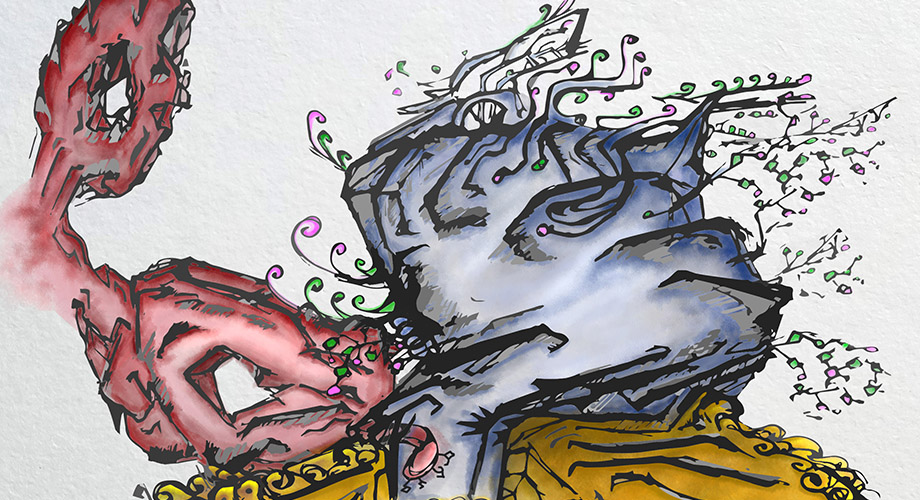The new approach stands to propel vaccine research and provide a blueprint for helping scientists understand diseases beyond HIV.
LA JOLLA, CA—Using some of the most powerful microscopes available to scientists today, structural biologists at Scripps Research have developed a method for examining the machinery of HIV in unprecedented detail—and in a near-native environment that hasn’t been possible before.
In doing so, they were able to see for the first time the complete picture how a well-known human antibody attacks a vulnerable site protruding from HIV’s sleek membrane surface. The study, which appears in Cell Reports, looks specifically at HIV’s fusion proteins; these spiky proteins are in charge of initiating infection of healthy immune cells in a patient’s body.
“We saw that when the antibody binds to the very bottom of the fusion protein to neutralize the virus, it first tilts it,” says first author Kimmo Rantalainen, PhD, staff scientist in the laboratory of Professor Andrew Ward, PhD. “It’s well known among researchers that this antibody is effective at targeting many strains of HIV, but we just weren’t sure until now how it went about its job.”
In 2-D images and 3-D structures captured with Scripps Research’s electron microscopes, the team saw precisely how the antibody, known as 10E8, attacks HIV’s fusion protein. The microscopy showed that the antibody wedges itself into the protein’s base (an area officially known as the “membrane proximal external region,” or MPER) and bends the spike before lifting it from the virus’s lipid surface to render it ineffective, Rantalainen explains.
The vulnerable MPER of the fusion protein is conserved across most strains of HIV. This is important because HIV mutates rapidly and escapes the antibody response. For a therapeutic antibody to be effective, it must attack a region that’s consistent across all or most strains. For that reason, this class of antibodies is of special interest to vaccine developers.
The new structural biology study is significant not only for the knowledge it provides to scientists looking to develop a vaccine for HIV, Rantalainen says, but because it presents a valuable new technique for using electron microscopy to observe fusion proteins in a more natural membrane environment.
Previously, structural studies of HIV spike proteins have been hindered by the difficulties in imaging the full protein as it protrudes from the virus’ waxy, double-layered outer membrane. Cryo-EM imaging works by flash-freezing proteins and then fixing them in films of glassy ice, but production of full spike samples for electron microscopy in a membrane has not been successful so far.
“We haven’t had good tools to study the spike protein in the context of lipid membranes,” Rantalainen says. “The samples are notoriously difficult to produce. Yet the membrane plays an essential important role in enabling the virus to infect new cells, so it’s critical to understand its structure in a more native environment.”
The Scripps Research team used trial and error as it engineered a new process for imaging HIV’s full spike protein along with the lipid membrane and the MPER-targeting antibody. Ultimately, they succeeded in assembling the spike in stable membrane patches by carefully adjusting the combination of reaction components and stabilizing the spike during the assembly. The full method is laid out in detail in the Cell Reports study.
“These new techniques are well suited to improve our understanding of how HIV works, which we believe will ultimately advance vaccine research and lead to valuable insights about other viruses,” Ward says. “We are continually amazed by what we can learn about viral diseases by solving their structures—and that is possible only with the best cryo-EM tools and talent.”
The study, “HIV-1 Envelope and MPER antibody structures in lipid assemblies,” is authored by Kimmo Rantalainen, Zachary T. Berndsen, Aleksandar Antanasijevic, Torben Schiffner, Xi Zhang, Wen-Hsin Lee, Jonathan L. Torres, Lei Zhang, Adriana Irimia, Jeffrey Copps, Kenneth H. Zhou, Young D. Kwon, William H. Law, Chaim A. Schramm, Raffaello Verardi, Shelly J. Krebs, Peter D. Kwong, Nicole A. Doria-Rose, Ian A. Wilson, Michael B. Zwick, John R. Yates III, William R. Schief and Andrew B. Ward.


